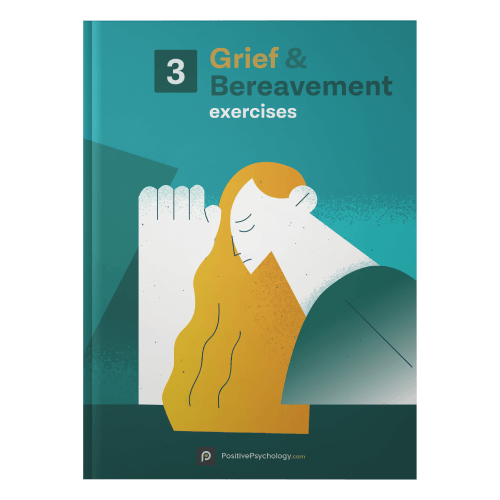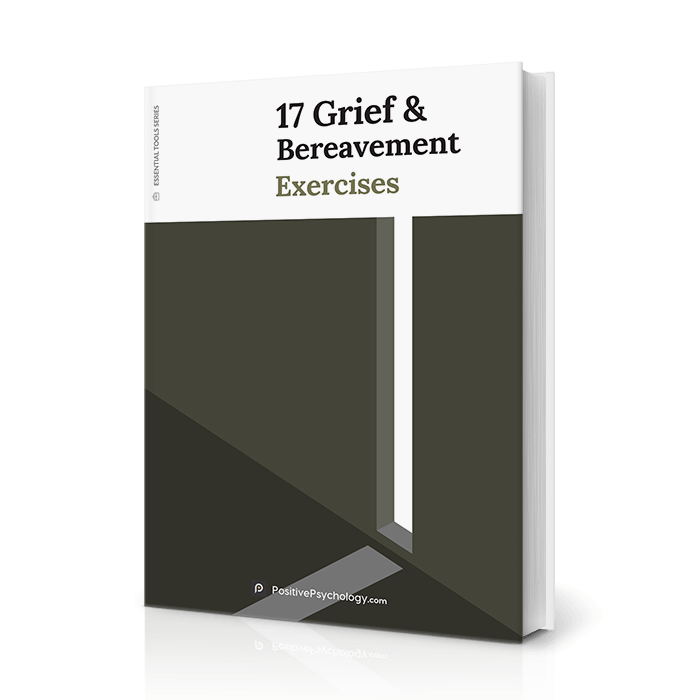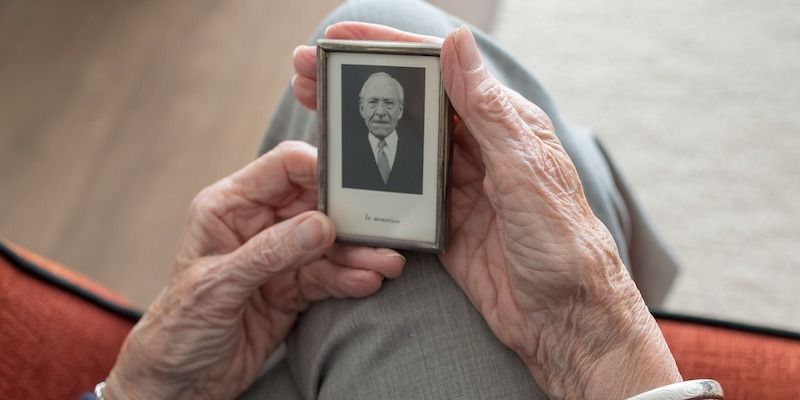12 Radical Acceptance Worksheets For Your DBT Sessions
 “Wasn’t me!” she said with a guilty smile.
“Wasn’t me!” she said with a guilty smile.
Denial is a powerful defense mechanism.
Some people rely more heavily on denial in a crisis situation than others.
When a person utilizes denial or another defense mechanism, they often end up feeling worse and in even more distress. This is because they are not accepting the reality of the situation (Chapman, Gratz, & Tull, 2011).
When a client can’t accept the current situation as is, then they may become emotional and react in a way that causes more problems (Linehan, 2014).
Radical acceptance is a tool used in Dialectical Behavior Therapy (DBT) to help clients see the present moment for what is and look at it more objectively, rather than purely emotionally (Linehan, 2014).
The following tools and worksheets will help clients practice radical acceptance coping skills.
Before you continue reading, we thought you might like to download our three Grief Exercises [PDF] for free. These science-based tools will help you move yourself or others through grief in a compassionate way.
This Article Contains:
What Is Radical Acceptance in DBT?
Dialectical is a crucial word in the term Dialectical Behavior Therapy. Clients who benefit from DBT often have extreme mood swings and see the world as black or white, all bad or all good.
“Dialectical” means duality, suggesting a balance between contradicting forces. In this case, the dialectical nature of emotionally-focused therapy is to balance the overly emotional mind and the overly logical mind (devoid of emotions). The resulting balance is called the “wise mind.”
Radical acceptance helps a client practice using the DBT “wise mind” between pure emotionality and pure logic (Linehan, 2014). The approach encourages thoughtful actions instead of mindless reactions.
When a client can accept the situation as is, they can then make more logical decisions.
Acceptance is simply acknowledging the moment as it is; there is no judgment involved in acceptance. In order to accept reality, a client must make a conscious choice to turn toward reality and away from cognitive distortions. They must commit to this acceptance. It is not always easy, and they may have to repeat a skill or mantra several times in order to get to a calmer emotional place.
When they have calmed and grounded themselves, it is sometimes easier to accept the situation as is, objectively, without judgment. And without emotionality, there is no suffering or pain. It is as though the client is looking at the situation through a glass wall. They can see what is happening, but they cannot interact with it.
The client becomes an observer, rather than a participant. This removes the feeling of needing to react to the moment. When the conscious choice has been made to commit to accepting reality as is, pain and suffering will lessen.
12 Best Radical Acceptance Worksheets

1. The “What If” Bias
The What If Bias worksheet helps clients determine if their bias is positive or negative and look at both kinds of potential outcomes to a situation – positive and negative – rather than focusing only on negative ones.
It helps alter polarized thinking into a middle ground.
2. Fact-Checking Thoughts
The Fact-Checking Thoughts Worksheet helps clients determine if their thoughts about a situation are realistic or if they are actually cognitive distortions. Once cognitive distortions are identified, they can be changed.
3. Radical acceptance of a distressing situation
When a client is in crisis, it may be difficult to look at a distressing situation objectively.
This Radical Acceptance worksheet helps clients partialize the event in order to critically analyze the situation as is. It helps turn distorted, negative cognitions into an accounting of realistic facts.
4. Focus on the Present Moment for Radical Acceptance
When a client is in a distressing situation, it is common for them to focus on the “would-haves,” “should-haves,” and “could-haves.” This focus on the past serves no purpose other than to mentally self-harm.
When the client radically accepts a situation, such as is featured in the Focus on the Present Moment exercise, it frees them from their feelings of guilt and helps them take logical next steps.
5. Countdown to calmness
When clients focus on the past or future, they may experience feelings of depression or anxiety.
This positive emotion exercise combines the use of the five senses and a counting coping technique to help ground the client in the present moment. When they are focused on the present, they can more easily make logical steps to move toward change.
6. Problem solving
Often in a crisis situation, a client may get overwhelmed with their distressing emotions. Radical acceptance helps a client move away from a purely emotional viewpoint to more middle-road thinking (gray area instead of black/white).
This Problem Solving Worksheet for Adults helps clients radically accept a situation by critically looking at the problem and objectively considering possible solutions.
7. Radical Acceptance Coping Mantras
The Radical Acceptance Coping Mantras worksheet is a list of phrases that can be repeated over and over again (or read out loud) to help remind the client of the reality of the situation.
The repetitive aspect of mantras can help aid in self-soothing as well. This not only reinforces radical acceptance, but helps calm the client in order to return to a more balanced state of mind.
8. Setting Radical Acceptance Goals
The Radical Acceptance Goals worksheet helps clients practice the coping technique of radical acceptance in non-distressing situations so they are more able to use the skill in a crisis situation. It is more difficult to try a new skill when we are focused on our emotions.
It is important for the client to practice radical acceptance in everyday life so that it becomes a habit and easier to implement in a crisis situation. This is akin to learning to play a music instrument or working out in a gym. The more we practice, the easier it becomes.
9. Meditation for Radical Acceptance
The Meditation for Radical Acceptance worksheet combines a traditional meditation with radical acceptance skills so that the client can practice accepting a stressful situation wherever they are and calm themselves.
Mindful meditation helps a client ground themselves in the present moment.
10. The Ups and Downs
Radical acceptance is an important part of objective decision making. Although designed for children, the Ups and Downs worksheet can help clients of any age think through their decisions logically. It helps clients break a situation down into the pros and cons in order to make more objective decisions, rather than emotionally reacting to a distressing situation, which can cause more distress.
Objectively and logically deciding on a path will allow a client to feel more in control of their own actions during a distressing time.
11. Practicing Radical Acceptance
The Practicing Radical Acceptance Worksheet helps a client accept a situation as is and develop a coping strategy to help tolerate associated distressing feelings.
Radical acceptance involves letting go of the need to control a situation. This worksheet helps a client view the situation as an outsider and act, rather than react, to a situation. Being proactive rather than reactive allows a client to feel more confident making decisions.
12. Challenging Catastrophic Thinking
The Challenging Catastrophic Thinking Worksheet helps clients practice radical acceptance by partializing a crisis scenario.
The worksheet helps the client analyze the distressing situation in order to look at potential outcomes more logically. It moves them away from polarized thinking into a state of “wise mind.”
9 Ways to Practice Radical Acceptance in Daily Life
Radical acceptance does not happen overnight. To apply it daily, and get better at it, consider practicing the following.
1. Acknowledging reality
The first step in radical acceptance is for the client to acknowledge that they are not accepting reality as it is.
Ask the client to let go of the “should-haves,” “would-haves,” and “could haves.” These are not realistic; they are hypothetical.
2. The past is in the past
Ask the client to acknowledge that they cannot change the past or predict the future. All we have is the current moment. We can not know what will happen in the future, and we must let go of past events; they are beyond our control.
3. Mantras for coping
Suggest a mantra such as “it is what it is” or “so it goes.” The client can repeat this mantra when feeling distressed to release the burden of control.
Repeating a mantra has several functions including grounding, radical acceptance, mindful meditation, and self-soothing.
4. We are only human, after all
Ask the client to recognize that they are not all-powerful. They cannot control all events, all situations, and all people. Some things are simply out of our control, and we must accept them as they are.
No human is perfect; we all make mistakes. Recognition of our humanity does not mean guilt or shame, but the goal is to alleviate the burden of the need to feel perfect and have a perfect life.
There is no such thing as a perfect life, and when a client accepts that they cannot control the actions of others, they can focus on their own.
5. Let go of judgments
Suggest that the client practice looking at events from a nonjudgmental viewpoint. When we practice non-judgment, we look at things objectively, rather than subjectively. We remove emotionality from the equation.
Clients who practice nonjudgmental thinking will learn to see the world as less polarized and people as human – rather than all good or all bad. When a client practices letting go of judgments, they stop judging others as well as themselves.
6. Forgive yourself
Self-compassion is a powerful way to practice non-judgment. We are only human, after all, and we will never be perfect. It is normal and expected that we will make mistakes.
We must forgive ourselves when we make mistakes and use them as learning experiences, rather than beating ourselves up.
7. Accept responsibility
Teach the client how to accept responsibility for their part in the situation. It is not black or white; it is not the fault of one person or the other.
Accepting responsibility should be done without judgment and with self-compassion. The client should look at their behavior objectively, to see the consequences in order to make real behavioral changes.
8. Learn and move on
Ask the client to reflect on their response to the situation, whether their response made them feel worse or better, and what they could do differently in the future.
They cannot change the past or predict the future. They can only learn from their mistakes and try not to repeat them.
9. See the gray areas
Have the client practice seeing the “gray areas” in life. People and situations are rarely all good or all bad. Ask them to practice seeing how a situation or person can have aspects that they both like and dislike at the same time.
Seeing the gray areas is a part of radically accepting people and situations as they are, not as we wish they were.
A Look at Mindfulness and Radical Acceptance

Some clinicians may confuse mindfulness with radical acceptance, since the two skills are so intertwined. However, mindfulness is a simple skill that can be practiced any time, anywhere, and will help the client build their emotional strength to master the more difficult radical acceptance skill (Koons, 2016).
Mindfulness is the ability to focus on the present moment with your entire being, using all five senses (McKay, Wood, & Brantley, 2019). Buddhists often practice mindfulness meditation to maintain a calm, zen-like state of mind.
Mindfulness can be practiced multiple times throughout the day. When a person focuses on their senses, body sensations, and environment, they simply provide the mind with a fulfilling task and leave no room for worrying.
Mindfulness in daily life means focusing on the task at hand; when you are eating, you should focus on eating (Van Dijk, 2013). When you are driving, you should focus on driving. Too often we do things mindlessly, without thinking, and we lose touch with the present moment.
Mindful living is something that clinicians can teach their clients to keep them grounded in the present. But mindfulness may also be used by clinicians for their own self-care and to help them regulate their work/life stress.
Radical acceptance builds on the skill of mindfulness. All clients and clinicians may benefit from practicing mindfulness, but not all will need to learn radical acceptance for distress tolerance. It may be helpful, therefore, for clients to learn about mindfulness first before practicing radical acceptance.
Radical acceptance is observing a situation objectively, without judgment (Van Dijk, 2013). Mindfulness helps us live in the moment, as a participant but without emotionality. The five senses have no emotions; they simply are.
What a client hears may sound nice, but nice is the emotion that they are attaching to the act of hearing. Mindfulness suggests that we should take a moment and just hear, just see, just feel, just taste, just smell – without assigning emotionality to the sensation.
When a client is in distress, it may be hard for them to return to a “wise mind” state of balanced calmness (Linehan, 2014). If they are having difficulty radically accepting a situation, without judgment, it may help them to practice experiencing the moment without emotionality.
If they focus on their mindfulness skills in the moment, objectively experiencing the world, they should be able to ground themselves more quickly and then feel ready to accept the situation simply as it is. Mindfulness is the path, and radical acceptance is the destination.
DBT skill: radical acceptance – Kati Morton
PositivePsychology.com Emotional Intelligence Resources
There are a number of tools in the Positive Psychology Toolkit© that can help your clients grow their emotional intelligence skills.
Here are a few suggestions to start:
- The Emotional Wellness Quiz provides a client with insight into how well they recognize, accept, and manage their feelings every day, as well as through change and challenging times.
- Emotion Regulation Worksheet For Adults worksheet is an exercise that helps clients analyze emotions based on events in life.
- The Thought Record Worksheet gives clients a structured way to monitor their thoughts and emotions.
- Understanding Emotion Versus Reason worksheet can help a client separate the emotional side of your thinking and responding from the rational one.
If you’re looking for more science-based ways to help others move through grief in a compassionate way, this collection contains 17 validated grief and bereavement exercises. Use them to help others find balance as they attempt to make sense of a life that has been irrevocably changed.
A Take-Home Message
When someone finds themselves in a perceived or actual crisis situation, it can be difficult to think straight. They may turn to defense mechanisms to cope or may make spontaneous and emotionally based choices, which don’t always turn out well. These may include self-harm or suicidal behaviors in order to escape the distressing emotions.
Feeling out of control may be the most distressing part of any crisis situation. Radical acceptance helps clients learn how to be in control by giving up the need to control. It is a very simple concept, but has profound effects.
This one skill can be absolutely life saving to someone who is feeling emotional overload. Clinicians may want to start by having their clients practice it daily in non-crisis situations so that they can quickly implement this strategy in a true emergency.
Simple to learn, easy to practice, and life changing!
We hope you enjoyed reading this article. Don’t forget to download our three Grief Exercises [PDF] for free.
- Chapman, A., Gratz, K., & Tull, M. (2011). The dialectical behavior therapy skills workbook for anxiety: Breaking free from worry, panic, PTSD, and other anxiety symptoms. New Harbinger Publications.
- Linehan, M. M. (2014). DBT skills training handouts and worksheets. Guilford Press.
- Linehan, M. M. (2014). DBT skills training manual. Guilford Press.
- Koons, C. R. (2016). The mindfulness solution for intense emotions: Take control of borderline personality disorder with DBT. New Harbinger Publications.
- McKay, M., Wood, J. C., & Brantley, J. (2019). The dialectical behavior therapy skills workbook: Practical DBT exercises for learning mindfulness, interpersonal effectiveness, emotion regulation, and distress tolerance. New Harbinger Publications.
- Van Dijk, S. (2013). DBT made simple: A step-by-step guide to dialectical behavior therapy. New Harbinger Publications.
Let us know your thoughts
Read other articles by their category
- Body & Brain (49)
- Coaching & Application (57)
- Compassion (26)
- Counseling (51)
- Emotional Intelligence (24)
- Gratitude (18)
- Grief & Bereavement (21)
- Happiness & SWB (40)
- Meaning & Values (26)
- Meditation (20)
- Mindfulness (45)
- Motivation & Goals (45)
- Optimism & Mindset (34)
- Positive CBT (28)
- Positive Communication (20)
- Positive Education (47)
- Positive Emotions (32)
- Positive Leadership (18)
- Positive Parenting (4)
- Positive Psychology (33)
- Positive Workplace (37)
- Productivity (17)
- Relationships (46)
- Resilience & Coping (36)
- Self Awareness (21)
- Self Esteem (38)
- Strengths & Virtues (32)
- Stress & Burnout Prevention (34)
- Theory & Books (46)
- Therapy Exercises (37)
- Types of Therapy (64)





What our readers think
I am grateful for this clear summary and attached resources/worksheets. I was looking for a DBT summary and this was very helpful. I am not working in therapy directly rather Palliative Care and I see many opportunities for application of this info.
Blessings, T
I agree with your comments. I am a regular person, kind, giving, I like to help people. I recently became aware I am in a relationship with a Narcissist. I missed the red flags when I met him. He swept me off my feet. He is very Dashing, kind, I thought we could be us/we. I was unaware of what I was getting into. I am currently attempting to help him. I do not want to come on to strong, but I know he has suffered in his life. I like the article also. It is straightforward and easy to understand.
I just wanted to agree with you.
Stephanie
My life has been full of, must haves, should haves and I’ve been a slave to my emotions. I honestly thought I was alone. Reading your article has given me hope for the present. I will not dwell on past mistakes or stress about the future, and allow them to ruin my present state of mind.
Thank you
Simple way of presenting DBT of Marsha Linehan. Beginners can easily follow it.
Good.
My client used this phrase the other day “Radical Acceptance” while she was trying to accept something very difficult, and it just blew my mind! Now here I am learning what it’s all about, as I have not studied DBT. Indeed, I can see how radical it can be! I’ve made copies of the worksheets here, I think they will be very useful. THANK YOU
Its really good to know about so many aspects reagarding emotions and making decisions and manageing distress situation .. thanks for sharing this valuable knowledge .. Thanks a lot .. It resonates ..